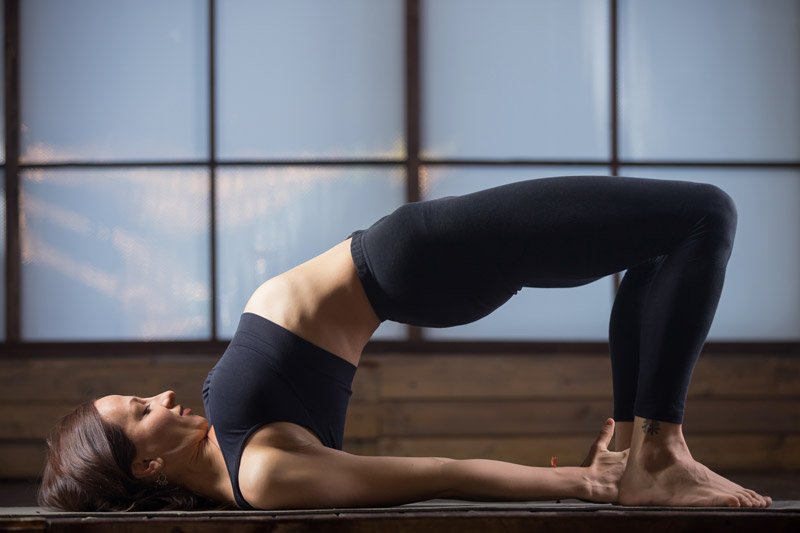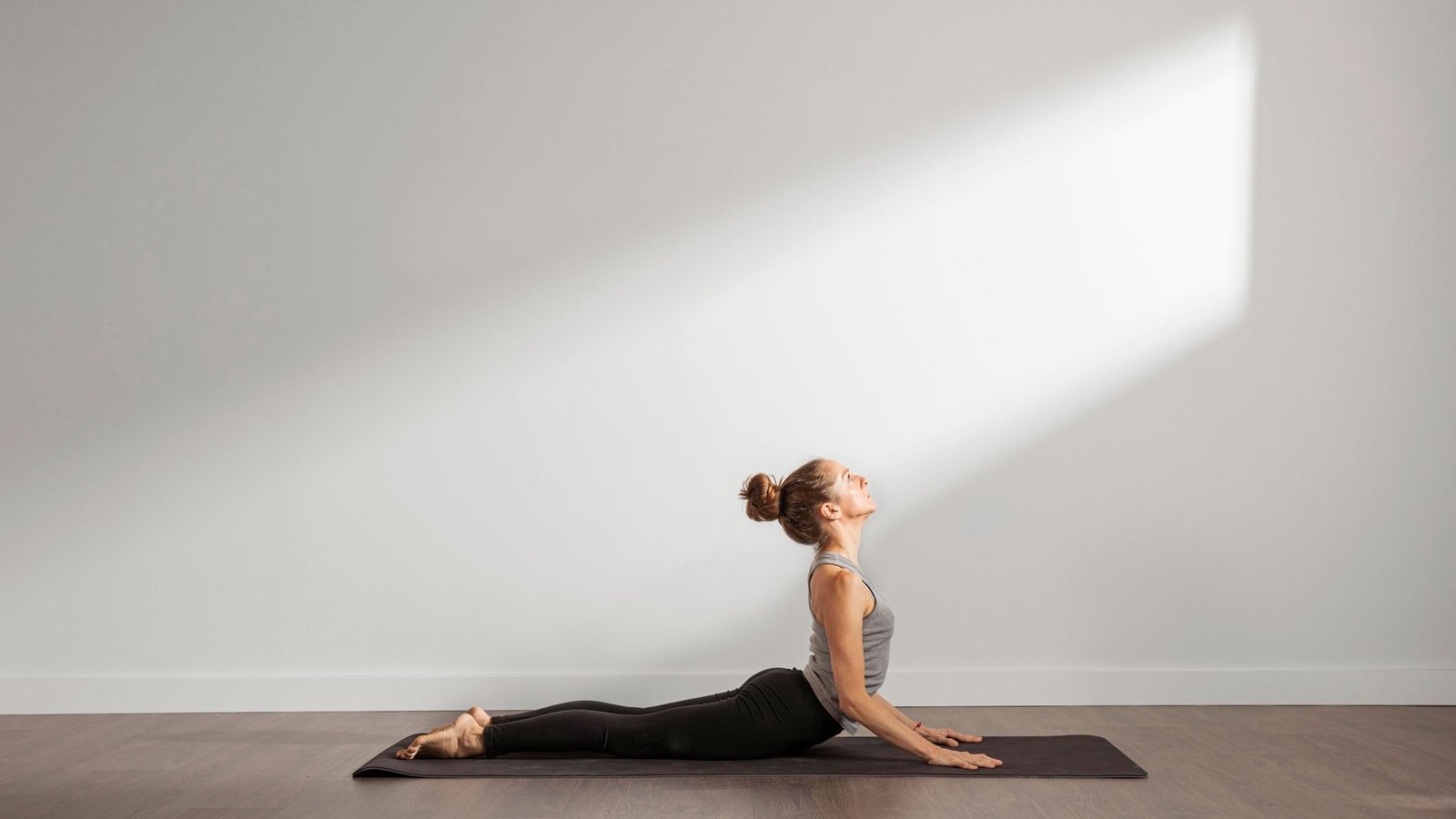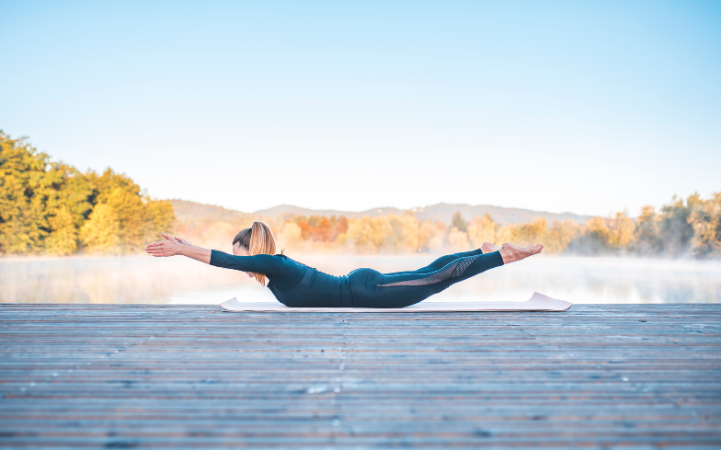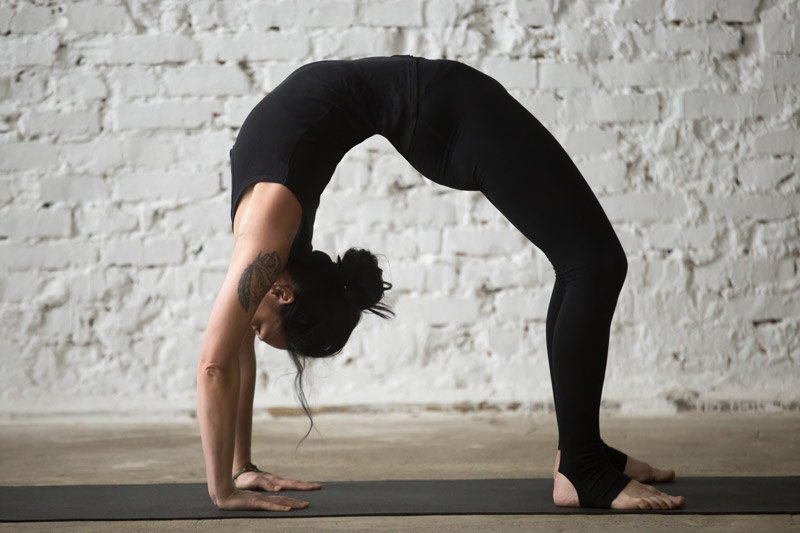Setu Bandhasana, also known as the Bridge Pose, is a powerful backbend that opens the chest, strengthens the back and legs, and calms the nervous system. The Sanskrit name comes from Setu meaning “bridge,” Bandha meaning “lock,” and Asana meaning “pose.” In this posture, the body resembles a bridge, supported firmly by the shoulders, arms, and legs. Setu Bandhasana is suitable for beginners and advanced practitioners alike, offering both therapeutic and energizing benefits when practiced with awareness.
Steps to Perform Setu Bandhasana
Starting Position: Lie flat on your back on a yoga mat. Keep your arms by your sides, palms facing down.
Bend Your Knees: Bend both knees and bring your feet flat on the floor, hip-width apart. Keep your heels close to your sitting bones.
Align the Body: Ensure your knees are in line with your ankles and not splaying outward. Keep your thighs parallel.
Inhale and Lift: As you inhale, press your feet and arms into the floor and lift your hips toward the ceiling.
Support the Back: You can clasp your hands beneath your back and press your arms down to lift the chest higher. Alternatively, place a yoga block under your sacrum for support.
Hold the Pose: Maintain the posture for 30–60 seconds, breathing deeply and keeping the neck relaxed and gaze toward the ceiling.
Release: Gently release the clasp of your hands, if any, and slowly lower your spine back down to the mat, vertebra by vertebra.
Benefits of Setu Bandhasana
Strengthens Muscles: Engages and strengthens the glutes, hamstrings, and lower back.
Improves Flexibility: Stretches the chest, neck, spine, and hip flexors.
Stimulates Organs: Gently massages abdominal organs, aiding digestion and improving metabolism.
Reduces Anxiety and Stress: Opens the heart and improves circulation, which helps calm the brain and relieve mild depression and stress.
Relieves Back Pain: Strengthens the spine and alleviates discomfort in the lower back when done properly.
Regulates Blood Pressure: The pose helps improve blood flow and may aid in regulating high or low blood pressure.
Therapeutic for Thyroid: The gentle throat compression is said to stimulate the thyroid gland.
Tips for Practicing Setu Bandhasana
Use Props for Support: Place a yoga block or bolster under your sacrum for a supported bridge if you’re new or looking for a restorative version.
Engage Thighs and Buttocks: Activate your legs and glutes without over-tightening to maintain a strong foundation.
Avoid Overarching: Do not push the rib cage too high or overextend the lower back. The lift should be even through the spine.
Breathe Deeply: Controlled breathing enhances the calming and energizing effects of the posture.
Warm-Up Beforehand: Gentle stretches like cat-cow, spinal rolls, or hip openers help prepare the body.
Cautions and Contraindications
Neck or Back Injuries: Avoid or modify the pose if you have neck or serious spinal conditions. Always keep the neck neutral and avoid turning the head during the pose.
Shoulder Problems: Be cautious if you have tight or injured shoulders. Keep the arms alongside the body if clasping is uncomfortable.
Recent Surgery: Those recovering from abdominal or spinal surgery should avoid this pose unless cleared by a healthcare provider.
Pregnancy: Pregnant practitioners can practice a supported version, but should avoid lifting the pelvis too high in later stages. Always consult a yoga expert.
Hernia: This pose may not be suitable for individuals with hernia issues unless performed with support and guidance.
Setu Bandhasana is a versatile and rejuvenating yoga pose that combines strength with serenity. It activates key muscle groups, opens the heart and chest, and promotes emotional and physical balance. Whether practiced dynamically for strength or restoratively with props, it provides numerous benefits for body and mind. As always, it’s essential to listen to your body, make adjustments where needed, and practice with mindfulness to enjoy the full potential of this empowering posture.






